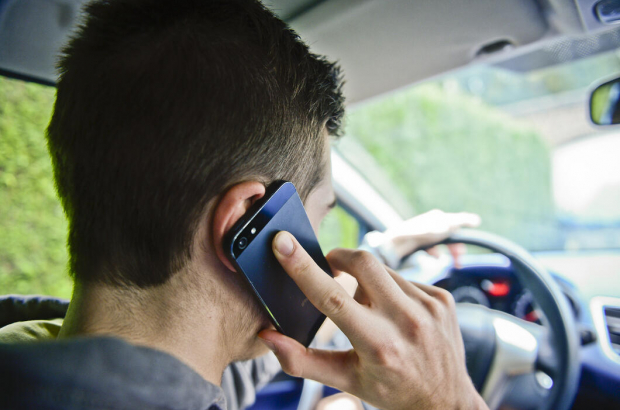- Daily & Weekly newsletters
- Buy & download The Bulletin
- Comment on our articles
Belgium tests traffic cameras capable of identifying dangerous mobile phone use
The Vias institute, known until recently as the Belgian Road Safety Institute, is currently testing a new traffic camera system that records whether a motorist is behind the wheel with a mobile phone in their hand. Initial tests show that the system works very accurately - but before the police can use the cameras, a change in the law is still needed.
Every year, according to Vias, at least 30 people are killed and 2,500 injured due to mobile phone use behind the wheel in Belgium alone. Due to the increasing possibilities of the smartphone, the problem of distraction is also increasing. Federal mobility minister Georges Gilkinet wants to further reduce the number of road deaths in Belgium. According to him, the police need to drastically increase controls on the biggest 'killers' in traffic: alcohol and drugs, not wearing a seatbelt, speeding and mobile phone use behind the wheel, or other forms of distraction.
Every year, the police already issue 100,000 fines for mobile phone use, but they must catch the offenders in the act. Having police officers manually carry out checks for mobile phone use while driving does not make sense. Smart camera technology linked to artificial intelligence provides the solution.
In the Netherlands, after similar tests of the smart camera technology, the Dutch government has already decided to use these cameras. If all goes well, Belgium will become the second European country to use AI to catch offenders using handheld devices while at the wheel.
The technology works by using a camera mounted on a bridge or portico above the road which takes different pictures of each car passing by. For example, photos are taken through the windscreen, another photo captures the licence plate of the vehicle. Based on AI, the camera filters all images suspected of showing the driver using a phone in hand (calling, sending a message, etc). The cameras work both at day and night, in all weather conditions and at any speed.
The selection of images then arrives at a processing centre. If the police there decide that the driver is committing an infringement, then they can send a fine. The camera system will therefore never make a report on its own. According to Vias, the cameras are also easy to move. So, they do not always have to be located in the same place.
In a first phase, the cameras will function separately from the existing so-called ANPR or automatic number plate recognition cameras, which are used today mainly for speeding offences. Of those, about 1,200 are already on our roads today. In the future, both systems will be connected to each other, so that the chance of catching offenders is increased considerably.
According to Vias, the system is very accurate. The cameras not only monitor the use of the phone, but also other actions behind the wheel that cause distraction. That goes from reading a newspaper to watching videos with a laptop. Using the same system, the police could also check in the future whether a driver is wearing her or his seatbelt.
Gilkinet says that in 2021 he will propose an amendment to the existing road traffic law of 1968, "so that new technical means, such as detection cameras, can be used as soon as they are available, provided, of course, that the determination of the offence is irrefutable".
In everyday language, this means that the police are not allowed to use the new cameras yet. This requires an amendment of the Belgian traffic code first. Right now, the police can fine you if they catch you red-handed. They can do so on the basis of Article 8.4: "Except when his/her vehicle is stationary or parked, the driver may not use a mobile phone which is held in the hand." Other possible forms of distraction are not explicitly prohibited in the traffic code but can be fined on the basis of Article 8.3. It says that "a driver must constantly be connected to the vehicle by hand and always be able to perform all the necessary driving movements". An infringement against Article 8.3 or 8.4 is a second-degree infringement and can result in a fine of €116.
At present, the police are also not yet able to use cameras because the legislation does not explicitly state that the determination of mobile phone use may be done by means of a technical device. An amendment must therefore also be made to the Royal Decree of 18 December 2002. This determines the violations that can be determined by unmanned automatic equipment based on the photo they take.
Of course, privacy when using camera images is an extremely sensitive matter. The images will only be used and seen by the police. The system immediately erases all images of drivers who are not using their phones. All passengers' faces are also immediately rendered unrecognisable.


















